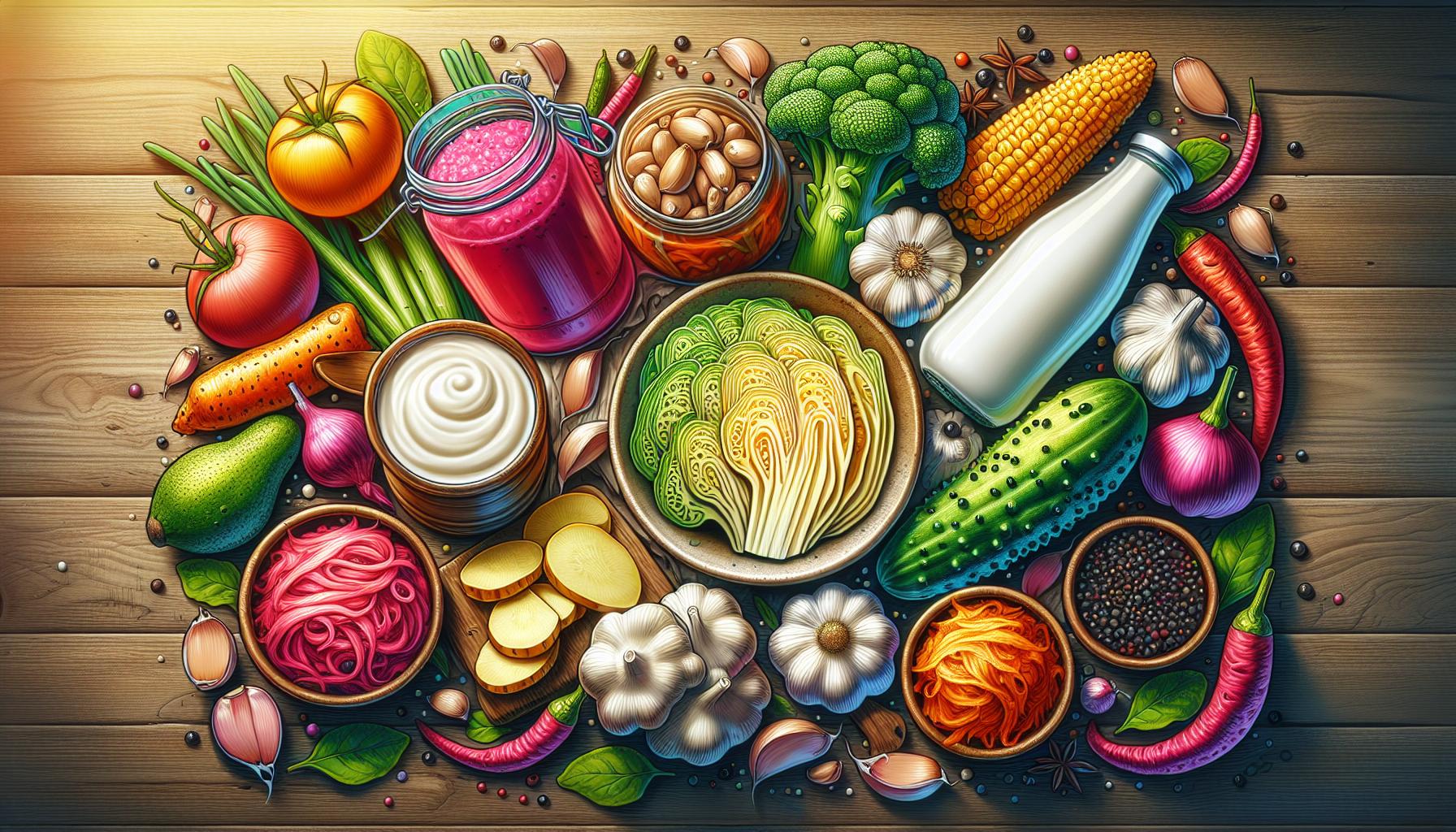Health Food Trends conscious consumers are driving a revolution in the food industry as innovative and sometimes quirky wellness trends sweep across social media feeds and grocery store shelves. From purple yams to mushroom coffee these trending superfoods promise everything from better sleep to enhanced brain function.
What’s fascinating is how quickly these trends evolve. Yesterday’s kale smoothie is today’s adaptogenic latte and tomorrow’s lab-grown superfood. While some food fads fade faster than a New Year’s resolution others have proven their staying power by delivering real health benefits backed by scientific research. As consumers become more educated about nutrition they’re demanding foods that not only taste good but also support their wellness goals.
Health Food Trends
Adaptogenic mushroom products dominate the wellness market through innovative formats like coffee blends, supplements, and snack bars. Lion’s mane, reishi, and cordyceps lead the category with their cognitive enhancement and stress-reducing properties.
Plant-based seafood alternatives capture consumer attention with products like algae-based tuna, mushroom-derived fish fillets, and jackfruit shrimp. These alternatives provide sustainable protein options while addressing concerns about ocean conservation.
Prebiotic-rich Health Food Trends gain momentum as consumers focus on gut health optimization. Foods like Jerusalem artichokes, green bananas, and chicory root emerge in mainstream products including breakfast cereals, yogurt alternatives, and nutrition bars.
Air-dried fruits establish themselves as healthier alternatives to traditional dried fruits. These snacks retain more nutrients and natural flavors without added sugars or preservatives, appearing in trail mixes and standalone packages.
| Trend Category | Market Growth (2024) | Consumer Adoption Rate |
|---|---|---|
| Adaptogenic Mushrooms | 42% | 38% |
| Plant-based Seafood | 35% | 29% |
| Prebiotic Foods | 28% | 45% |
| Air-dried Fruits | 25% | 32% |
Seed-based proteins expand beyond chia and flax to include watermelon seeds, pumpkin seeds, and sunflower seed protein powders. These alternatives offer complete protein profiles with essential amino acids.
Functional beverages incorporating nootropics target cognitive performance through natural ingredients like L-theanine, bacopa, and rhodiola. These drinks provide alternatives to traditional caffeine-based energy drinks.
Regenerative agriculture products emphasize environmental sustainability through foods grown using soil-health practices. Products feature certification labels indicating their contribution to carbon sequestration and biodiversity.
Plant-Based Protein Alternatives

Health Food Trends proteins continue to evolve beyond basic meat substitutes, offering diverse options for protein-conscious consumers. The market expands with innovative ingredients advancing taste profiles texture matching capabilities.
Alternative Meat Products
The latest alternative meat products incorporate precision fermentation technology to create authentic meat-like textures. Pea protein isolates serve as primary ingredients in products like Beyond Meat burgers, delivering 20 grams of protein per serving. Mycoprotein, derived from fungi, creates fibrous textures in products such as Quorn, containing 15 grams of protein per serving. Emerging technologies utilize 3D printing to structure plant proteins into complex meat-like formations. Manufacturers combine ingredients like mung bean protein chickpea flour jackfruit to replicate specific meat varieties:
- Seitan products provide 25 grams of protein per serving for beef alternatives
- Tempeh offers 17 grams of protein per serving for poultry substitutes
- Jackfruit contains 3 grams of protein per serving for pulled pork alternatives
Plant-Based Dairy Substitutes
Health Food Trends dairy alternatives feature protein-rich formulations from diverse sources. Oat milk leads the category with a 27% market share in 2024, containing 3 grams of protein per cup. Pea protein milk delivers 8 grams of protein per serving, matching dairy milk protein content. Advanced processing techniques create dairy-free cheese alternatives using:
- Cashew bases containing 5 grams of protein per ounce
- Almond proteins delivering 4 grams of protein per serving
- Chickpea formulations offering 6 grams of protein per ounce
- Cultured protein additions increasing bioavailability
- Probiotic fortification improving digestibility
- Enzymatic modifications developing authentic flavors
Functional Foods and Adaptogens

Functional Health Food Trends incorporate bioactive compounds that enhance physical health mental wellness. Adaptogens help the body resist stressors while supporting immune system function.
Mushroom-Based Products
Medicinal mushrooms dominate the functional Health Food Trends category with scientifically validated health benefits. Lion’s mane mushroom supports cognitive function through compounds that stimulate nerve growth factor production. Reishi mushrooms contain triterpenes beta glucans that enhance immune system response. Chaga provides antioxidants with an ORAC value 50 times higher than blueberries. Companies integrate these mushrooms into:
- Coffee blends enhanced with cordyceps for sustained energy
- Protein powders combining lion’s mane turkey tail for immunity
- Ready-to-drink beverages featuring reishi for stress relief
- Chocolate bars infused with chaga antioxidants
- Capsules containing multiple mushroom extracts
- Rhodiola root extract for mental fatigue recovery
- Maca powder to balance hormone levels
- Goji berries rich in stress-fighting antioxidants
- Turmeric with anti-inflammatory curcumin
- Matcha green tea containing L-theanine for calm focus
| Adaptogen | Key Benefit | Research-Backed Result |
|---|---|---|
| Ashwagandha | Stress Reduction | 28% cortisol decrease |
| Lion’s Mane | Brain Function | 31% cognitive improvement |
| Reishi | Immune Support | 47% NK cell activity increase |
| Rhodiola | Mental Energy | 20% fatigue reduction |
Gut-Friendly Foods

Gut Health Food Trends influences overall wellness through its impact on immunity digestion mental health. Research indicates a direct correlation between gut microbiome balance and improved health outcomes.
Fermented Products
Traditional fermented Health Food Trends enhance gut health through beneficial bacteria production. Kimchi contains probiotics that support digestive health with 28 million CFUs per serving. Korean kombucha sales increased 245% in 2023 as consumers embraced its gut-healing properties. Tempeh provides 15 grams of protein per serving while delivering beneficial compounds from fermentation. Miso paste contains enzymes that aid nutrient absorption alongside its probiotic benefits. Kefir delivers 12 different probiotic strains compared to yogurt’s typical 2-3 strains.
Prebiotic-Rich Options
Prebiotic fiber feeds beneficial gut bacteria creating optimal conditions for microbiome health. Jerusalem artichokes contain 76% inulin fiber supporting probiotic growth. Green bananas provide resistant starch at 12.5 grams per 100-gram serving. Chicory root delivers 47% of daily fiber needs in one ounce while feeding good bacteria. Dandelion greens pack 24% of daily fiber requirements plus prebiotic compounds. Garlic contains 17% prebiotic fiber by weight enhancing beneficial bacterial colonies. Tiger nuts emerge as a novel prebiotic source with 10 grams of fiber per serving.
| Food Item | Prebiotic Fiber Content |
|---|---|
| Jerusalem Artichoke | 76% inulin |
| Chicory Root | 47% daily value |
| Garlic | 17% by weight |
| Tiger Nuts | 10g per serving |
Sustainable and Clean Label Products
Consumer demand for sustainable food products drives manufacturers to implement eco-conscious practices throughout their production processes. Clean label products emphasize transparency in ingredients while prioritizing environmental responsibility.
Eco-Friendly Packaging
Health Food Trends manufacturers embrace biodegradable packaging materials made from cornstarch, mushroom roots or seaweed compounds. Major brands utilize recycled plastic containers, reducing virgin plastic use by 45% since 2020. Glass containers with refill options appear in 35% more stores compared to 2022. Innovative packaging solutions include edible films from fruit purees, plant-based polymer wraps that decompose within 180 days. Companies like Loop partner with retailers to introduce reusable container programs, reporting 78% customer retention rates. Paper-based alternatives replace plastic in ready-to-eat meals, while concentrated product forms reduce packaging volume by up to 60%.
Minimal Ingredient Lists
Clean label products feature recognizable ingredients found in home kitchens. Single-ingredient snacks made from whole foods dominate retail shelves, with sales increasing 85% since 2021. Products containing 5 ingredients or fewer represent 40% of new food launches. Popular items include date-based energy bars, freeze-dried fruit crisps, roasted seaweed snacks. Food manufacturers remove artificial preservatives, colors, flavors from existing product lines. Third-party certifications verify clean label claims, with 65% of consumers checking for these seals. Brands highlight naturally occurring preservatives like citrus extracts, rosemary oil, vinegar in their formulations.
Ancient Grains and Seeds
Ancient grains emerge as nutritional powerhouses in modern diets, with quinoa leading sales growth at 32% annually. Teff contains 11g of protein per cup plus essential minerals like iron magnesium. Amaranth provides complete protein with all nine essential amino acids making it ideal for plant-based diets.
| Grain/Seed | Protein (g/cup) | Key Nutrients |
|---|---|---|
| Quinoa | 8 | Iron, Zinc, B-vitamins |
| Teff | 11 | Iron, Magnesium, Calcium |
| Amaranth | 9 | Lysine, Fiber, Manganese |
| Buckwheat | 6 | Rutin, Magnesium, B-vitamins |
| Chia | 4 | Omega-3s, Fiber, Calcium |
Consumer interest drives innovation in ancient grain products, including:
- Breakfast cereals incorporating sprouted kamut amaranth
- Snack bars featuring popped sorghum quinoa
- Pasta alternatives made from buckwheat teff
- Crackers combining chia flax hemp seeds
- Breads enhanced with spelt einkorn grains
Food manufacturers integrate these ingredients through specialized processing methods:
- Sprouting grains increases nutrient bioavailability
- Stone grinding preserves beneficial compounds
- Air popping creates light crunchy textures
- Fermentation enhances digestibility absorption
- Cold pressing seeds maintains omega fatty acids
- Enhanced digestive health from high fiber content
- Improved blood sugar control through complex carbohydrates
- Reduced inflammation from antioxidant compounds
- Better heart health via essential fatty acids
- Increased energy from sustained nutrient release
Global Flavors and Fusion Foods
International cuisine influences create innovative health food combinations across global markets. Korean gochujang sauce appears in plant-based bowls while Japanese matcha integrates into protein smoothies. Mediterranean ingredients combine with Asian cooking techniques to produce nutrient-dense fusion dishes.
Traditional healing ingredients from diverse cultures enhance modern wellness products:
- Indian turmeric lattes incorporate adaptogens for stress relief
- Thai coconut curry blends feature medicinal mushrooms
- Mexican blue corn tortillas include ancient grain fortification
- African moringa powder enriches protein bars
- Brazilian açaí bowls mix with Japanese matcha
Popular fusion food trends showcase cross-cultural nutrition:
| Fusion Combination | Health Benefits | Market Growth |
|---|---|---|
| Kimchi Tacos | Probiotics + Protein | 45% annually |
| Matcha Overnight Oats | Antioxidants + Fiber | 38% annually |
| Curry Cauliflower Rice | Anti-inflammatory + Low-carb | 52% annually |
| Miso Glazed Sweet Potato | Gut Health + Vitamins | 41% annually |
Global spice blends enhance the nutritional profile of everyday foods:
- Za’atar adds antioxidants to roasted vegetables
- Berbere spice increases metabolism in grain bowls
- Dukkah provides healthy fats in salad toppings
- Shichimi togarashi boosts circulation in soups
Restaurant chains incorporate international superfoods into mainstream menus through fusion dishes. Food manufacturers develop convenient packaged options featuring global ingredient combinations. These cross-cultural innovations create appealing ways to consume nutrient-dense foods while introducing consumers to diverse healing traditions.
The health food landscape continues to evolve as consumers prioritize both wellness and sustainability in their dietary choices. From adaptogenic mushrooms to ancient grains these innovations reflect a deeper understanding of nutrition’s role in overall health. The fusion of global flavors with functional ingredients has created exciting new options that make healthy eating more accessible and enjoyable.
The future of health food looks promising as technology advances and consumer awareness grows. With increased focus on environmental impact sustainable packaging and clean labels the industry is poised to deliver products that benefit both people and the planet. These trends aren’t just passing fads – they’re shaping a new era of conscious consumption that’s here to stay.



